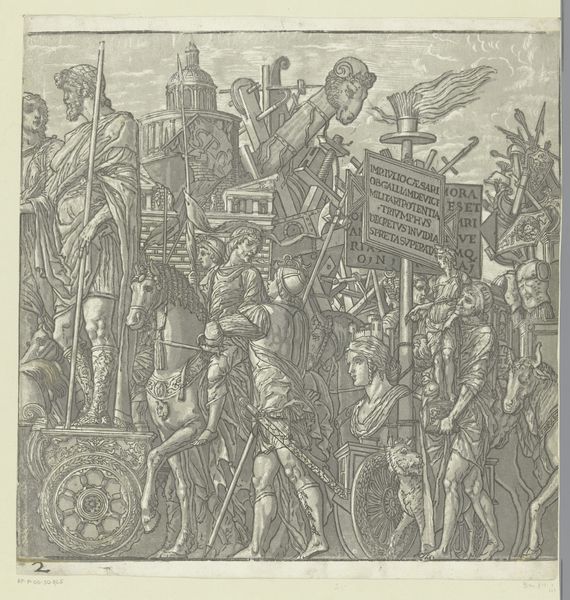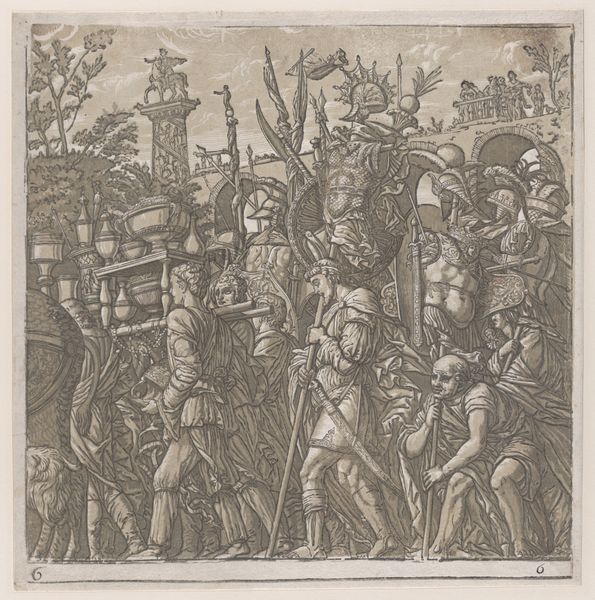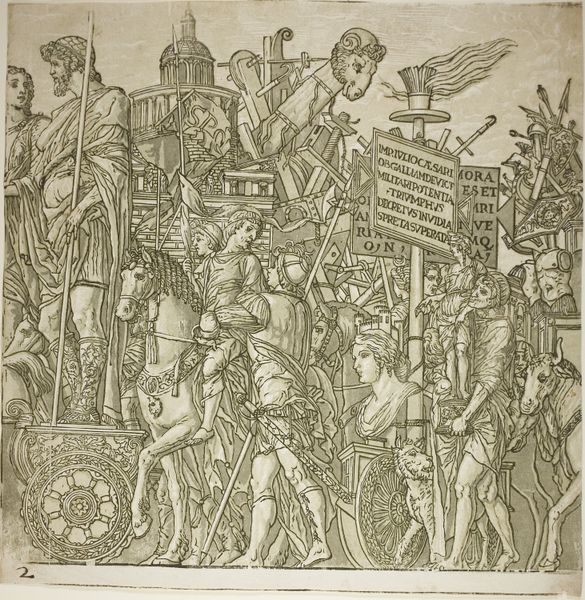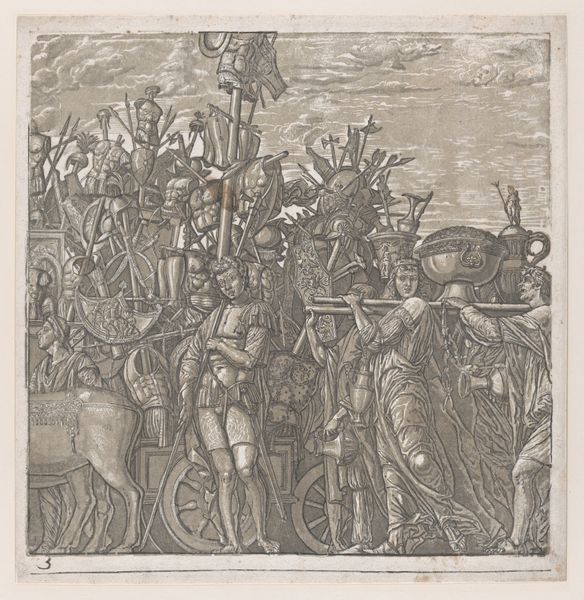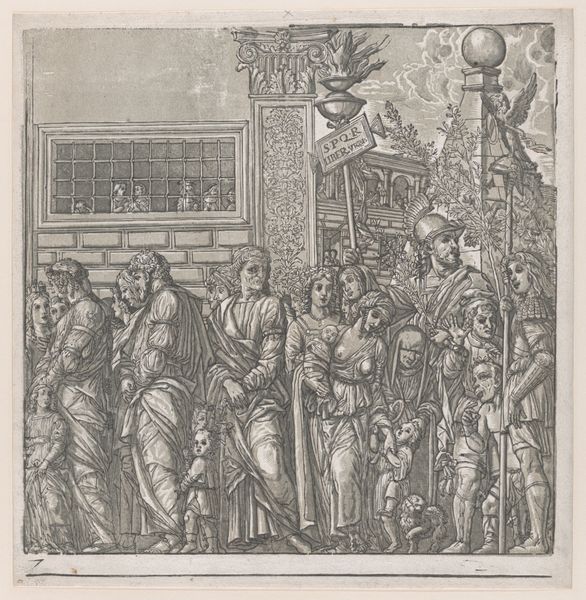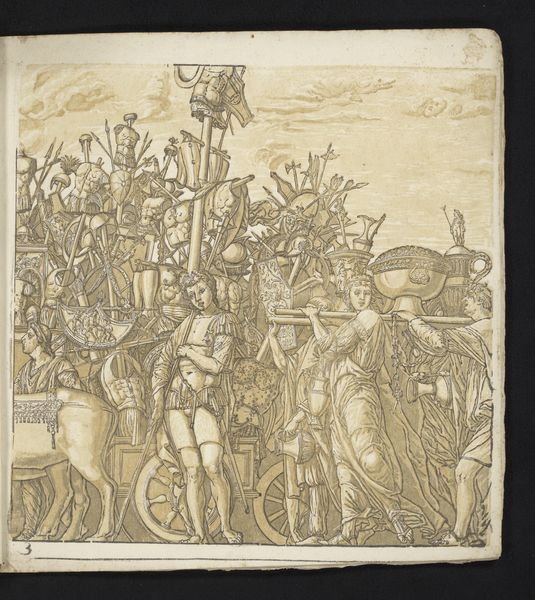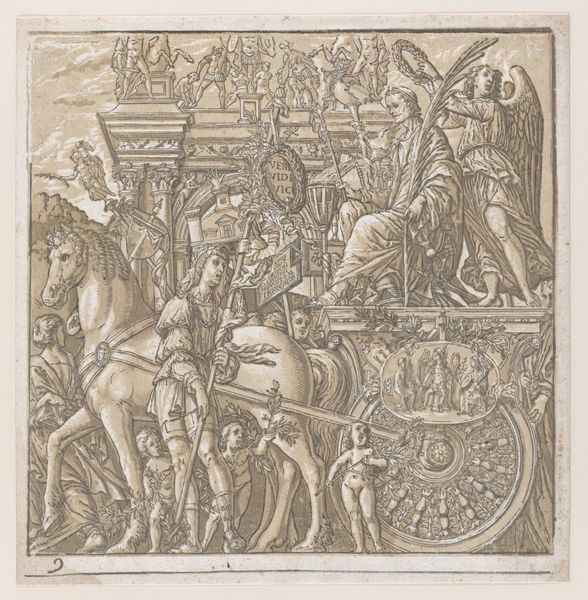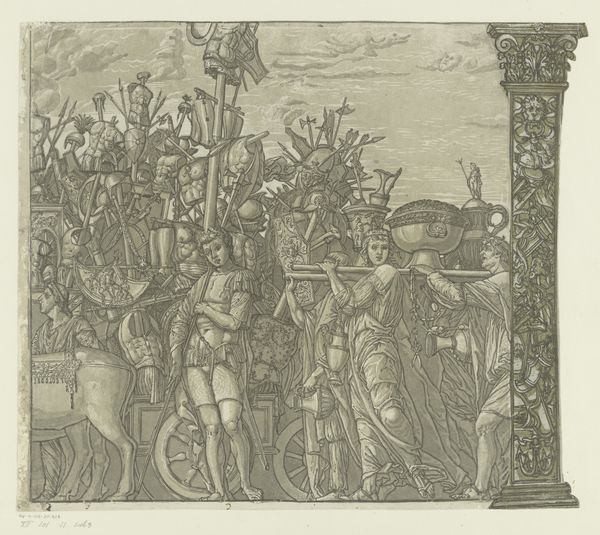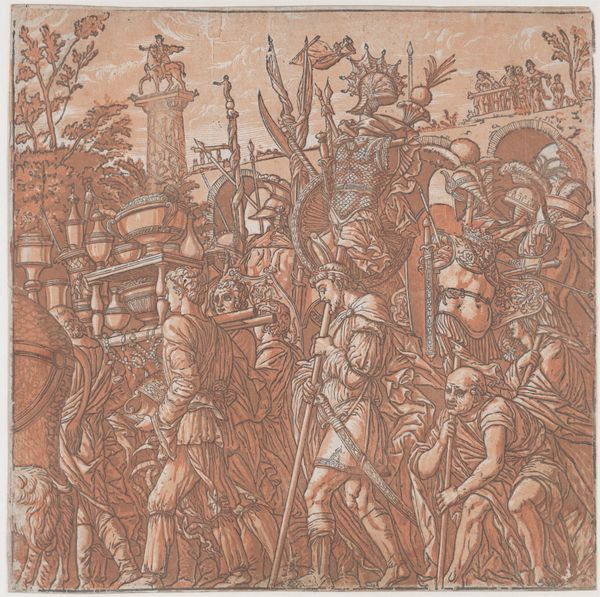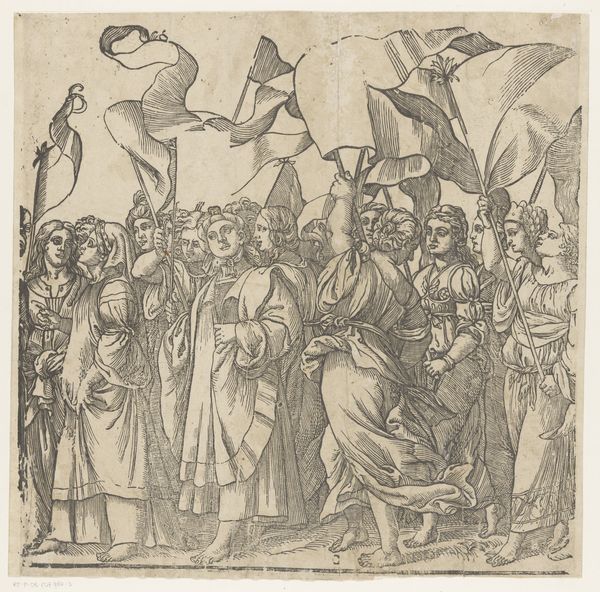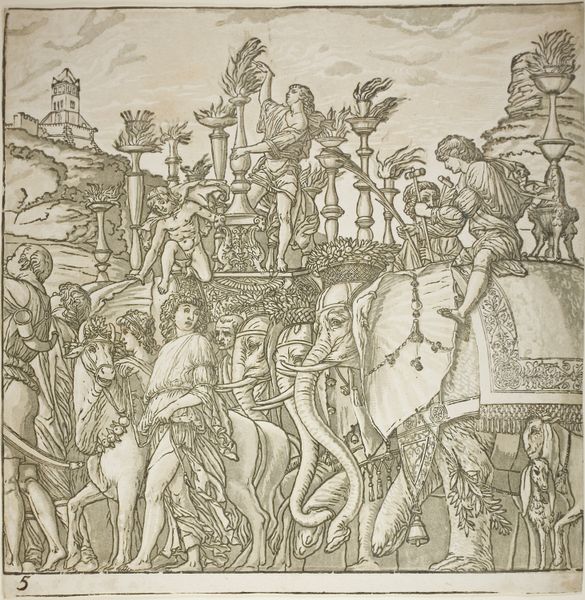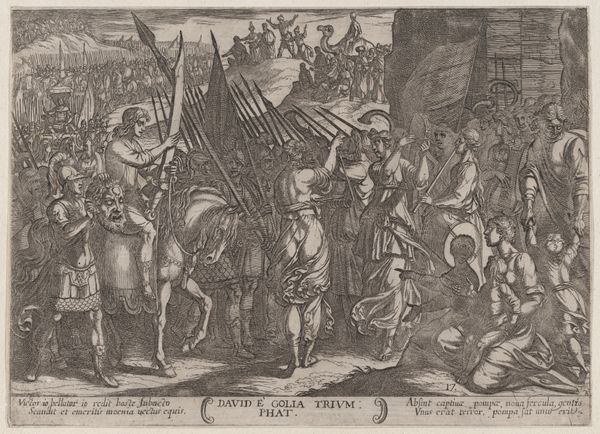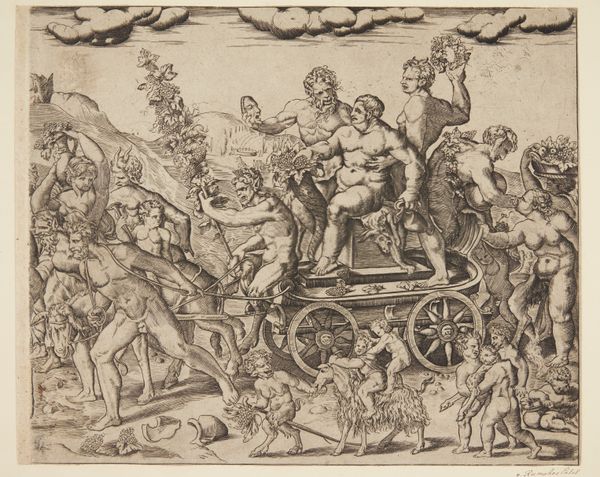
Sheet 2: A Triumphal Chariot, from "The Triumph of Julius Caesar" 1599
0:00
0:00
drawing, print, intaglio, engraving
#
drawing
#
narrative-art
# print
#
intaglio
#
figuration
#
11_renaissance
#
history-painting
#
italian-renaissance
#
engraving
Dimensions: Sheet: 15 1/2 × 15 5/8 in. (39.4 × 39.7 cm) Image: 14 1/2 × 15 1/4 in. (36.8 × 38.8 cm)
Copyright: Public Domain
Editor: This is "Sheet 2: A Triumphal Chariot, from 'The Triumph of Julius Caesar'" by Andrea Andreani, created in 1599. It's an engraving. I find the density of figures quite striking. It's almost overwhelming with all the symbols and people crammed into the frame. What historical perspectives can you offer on this piece? Curator: It's fascinating how Andreani uses printmaking to disseminate Roman imperial power. Think about the context: The Renaissance saw a renewed interest in classical antiquity. How does this print serve as propaganda? Editor: Propaganda? You mean beyond just depicting a historical event? Curator: Exactly. Consider the intended audience. Prints were relatively accessible. By visually connecting contemporary rulers with the glory of Caesar, Andreani, or rather his patron, aimed to legitimize their power through historical precedent. Note the density of the composition, as you pointed out. What effect does that visual abundance create? Editor: It does suggest power, almost like Caesar’s triumph is overflowing, unstoppable. Also, seeing this imagery circulated widely, it's a very early form of mass media shaping public opinion about leadership. Curator: Precisely! Furthermore, what's absent can be just as telling. The print is titled 'The Triumph of Julius Caesar' but notice what the focus is drawn to. It shows an idealized image of conquest but omits all of the bloody reality or its cost for those who were conquered. It creates an illusion. Editor: So, it’s not just about remembering history, but shaping a specific *interpretation* of it, with Andreani facilitating it all. I will think differently about this engraving from now on. Curator: Indeed. It is a testament to art’s role in constructing historical narratives. Looking closely at the relationship between politics, power, and imagery enriches our viewing experience.
Comments
No comments
Be the first to comment and join the conversation on the ultimate creative platform.
